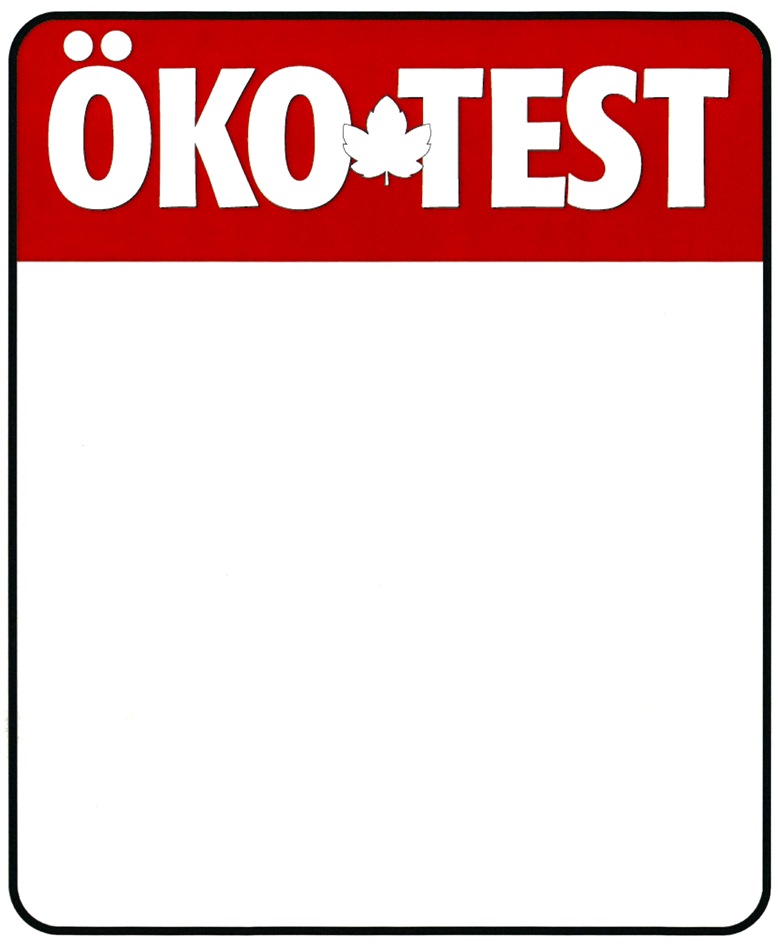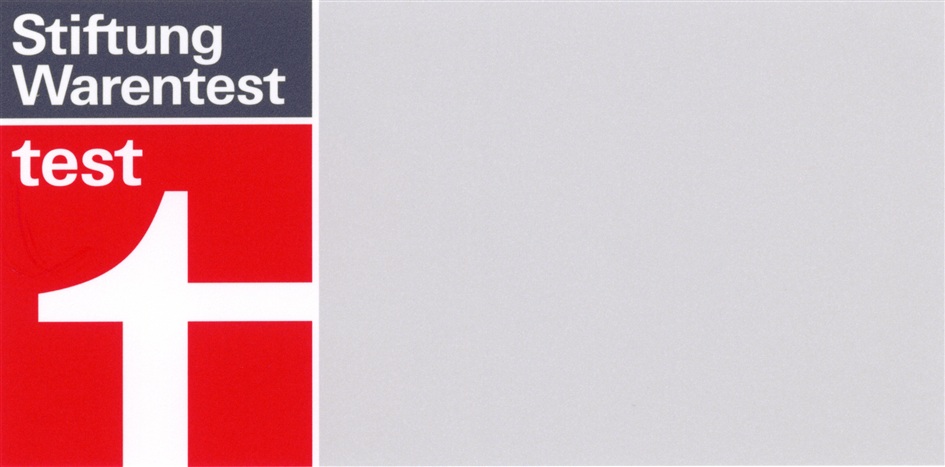
The Power of Test Labels
When was the last time that you bought something not just off the shelf, but with giving it a little more thought before buying? Did you look for test results for the product category that you were interested in and if so, did the results influence which product exactly you ended up buying? And what does all of that have to do with trademarks? Here is the answer…


DE 30 2016 033 191 DE 30 2008 025 577
(Examples of blank test labels registered with the German Patent and Trademark Office)
Background
No matter if you are looking to buy a new electronic device, a new pillow, baby clothing or just plain water, there are (independent) tests and rankings for nearly everything and under all kinds of aspects. Over the years it has become quite common that before buying something, consumers search print and online media to see which products are “good” and which ones they should better not focus on. It is, therefore, of interest for manufacturers and merchants to use positive test result in the advertising of products.
Test institutions and media companies “allow” use of the test results for the tested products under certain circumstances and by use of their own trademarks – usually some kind of blank label that shows the name of the testing institution (the “test label”). The name of the tested product, the test result and information on where the test result has been published (in most cases the issue number of a print or online magazine) are then added by the manufacturer according to the license agreement with the testing institution for its trademark. Unfortunately, the test labels are often also used without a license and/or in relation to goods and services that have not been tested or that have been tested in a different size or color.
For instance, if a bed mattress has been tested “very good” in size 90x200 cm, can the testing institution’s trademark showing the label “very good” for size 90x200 cm be used on a bed mattress in size 140x200 cm as well or is that trademark infringement? Or if a baby bodysuit in color light blue has been tested, can the test result be used on the same good in color pink or yellow? The question has been subject of several warning letters and court cases over the years and now the German Federal Court of Justice (BGH) had to decide. It did so with three (3) decisions of 12 December 2019 (case no. I ZR 173/16 – “ÖKOTEST I” and case nos. I ZR 174/16 and I ZR 117/17 – “ÖKOTEST II”). The press release (in German only) can be found at the following link:
https://www.bundesgerichtshof.de/SharedDocs/Pressemitteilungen/DE/2019/2019158.html?nn=11918200
The Decisions
The BGH decided in favor of the testing institution (the plaintiff) and found it trademark infringement that the testing label had been used on products or in advertisements for products that had been tested in other sizes and/or colors.
Interestingly, the Court did not confirm likelihood of confusion between the registered trademark of the testing institution and the test label as used by the defendants. In fact, it held that the services covered by the registered trademark, namely, consumer advice and information, and the commercial services provided by the defendants (merchants in these cases) were dissimilar. A merchant who provides information about the characteristics of a product, such as its evaluation in a test carried out by a third party, does not provide the service of consumer advice and information in addition to the commercial offering. This finding seems non-compulsory and could well be argued to the contrary.
However, in its overall assessment, the Court concluded that the reputation of the test label and the high degree of similarity between the signs in comparison offset the dissimilarity of the goods and services concerned. The decisions confirmed that the test institution’s trademark is a well-known mark and that use of the mark without a license or in advertisements for goods other than the exact ones tested and without due cause, constitutes trademark infringement. If a third party attempts to gain advantage – at no cost – through the use of a sign similar to a mark with a reputation in order to benefit from the power of attraction, the reputation and the prestige of that mark and to exploit the economic efforts of the trademark owner to create and maintain the reputation of the trademark, the advantage resulting from such use must be considered an unfair advantage taken of the distinctive character or the repute of the mark.
After all, the Court – like the appellate courts before - gave greater weight to the test institution’s interest in controlling the advertising with its sign than to the defendants’ interest in informing their customers about the test institution’s assessment that the offered products were good or very good.
Conclusion
It remains to be seen if the use of test labels will change in the aftermath of these decision to make them more reliable for consumers again. For the moment, and no matter if you are a law firm, a testing institution, a manufacturer or a merchant – we are interested to hear how situations like these are dealt with in your country and welcome your comments. You may contact us at
or by phone at +49 – (0)89 – 55 87 98 70. We look forward to hearing from you!
Related
- "Neuschwanstein" is not a trademark!
- 1 December 2017: Madrid Monitor takes its place as the one and only tool for tracking international trademarks
- 1 January 2020 - Changes in Classifications - Trademarks, Designs, Patents and Utility Models
- 100th Anniversary of Bavaria (Germany) - A glance at trademarks, start-ups, innovation & events
- 10th Anniversary Edition - 10 Things to Know about LexDellmeier - Past, Present & Future
- 14 June 2013: Munich Patent Law Conference - Calculating Damages in Patent Infringement Cases
- 15 Top Brands - Interactive Brand Rating - Years 2000 - 2018
- 15 Years LexDellmeier - 2024 New Year Wishes
- 2014: Statistics for Community Trademarks
- 2024 World IP Day - Building Our Common Future with Innovation and Creativity
